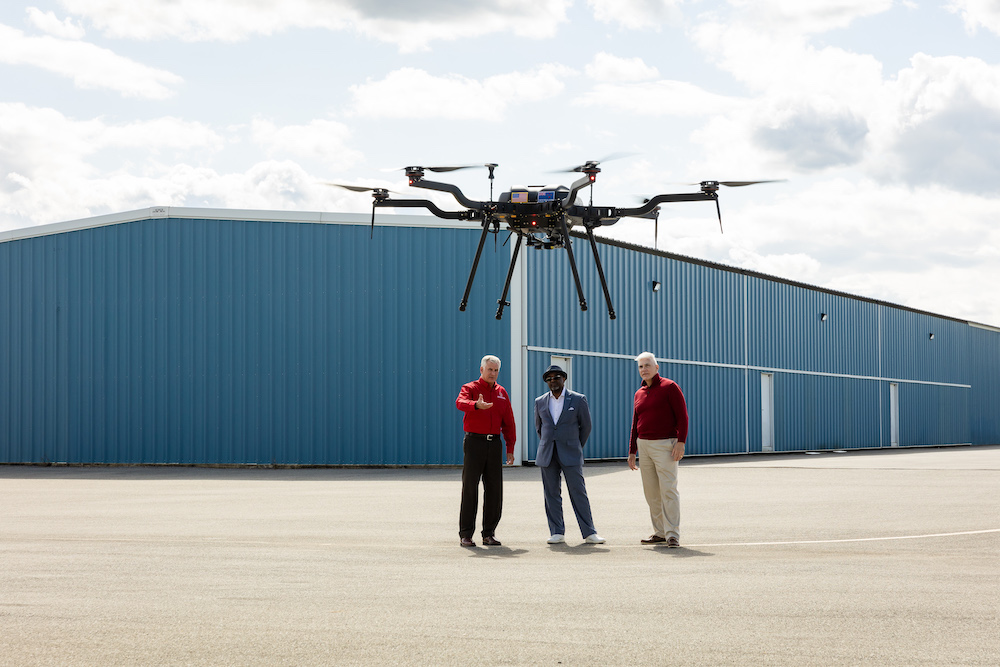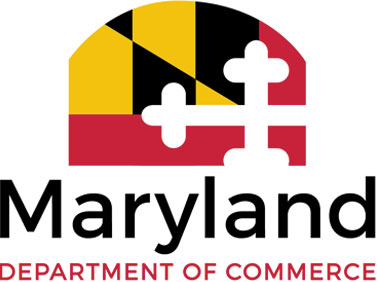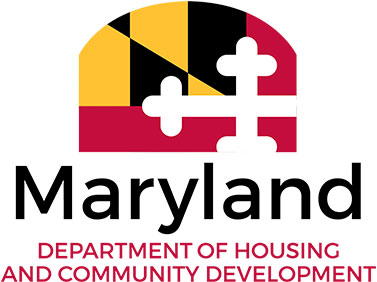Maryland Commerce Invests in Southern Maryland innovation

Learn how the the Maryland Department of Commerce is supporting continued growth in unmanned aircraft systems and autonomy.
Maryland’s economic growth strategy is closely tied to the state’s regional economic development technology corridors, including the well-known autonomy corridor that stretches into Southern Maryland. Home to a major navy flight and warfighter presence, Southern Maryland is well-situated to focus on unmanned aircraft systems (UAS) and autonomy, including in the growing AeroPark Innovation District.
“One of the biggest things we can do at the Maryland Department of Commerce is help fund economic development projects throughout the state,” said Commerce Secretary Kevin Anderson. “Calvert, Charles and St. Mary’s counties are helping lead Maryland in its quest to find the most innovative companies and technologies.”
The Maryland Department of Commerce recently awarded $380,000 to enhance the public space around the AeroPark Innovation District and encourage continued growth in the airport district. Separately, the department partnered with Maryland Economic Development Corporation (MEDCO) on a study to help develop a statewide strategic autonomy vision.
Tom Sadowski, the executive director of MEDCO, agrees that the AeroPark Innovation District is key to helping advance critical mission objectives for the Navy, federal agencies, businesses and other key partners with a major presence in Southern Maryland.
“It’s a perfect space for the collaboration of industry, government and academia in the advancement of technologies critical to our nation’s defense and the improvement of our everyday lives,” said Sadowski. “MEDCO is proud to be a strategic partner to advance this important work — and to help the future of not just southern Maryland but the entire State of Maryland economy.”
Southern Maryland’s unique UAS Research and Operations Center (UROC)
One of the AeroPark Innovation District’s major assets is the University of Maryland’s UAS Research and Operations Center (UROC), which stands at the forefront of UAS rulemaking, commercialization and national airspace integration.
UROC has partnered with several key federal agencies involved with UAS since its formation, including DHS, NASA and NOAA. It’s worked with defense organizations like the Army Research Laboratory, the Defense Advanced Research Projects Agency and the Naval Air Warfare Center Aircraft Division, as well as researchers based at the University of Maryland and elsewhere. Former U.S. Naval Aviator John Slaughter serves as the director of UROC and sees national implications for the center’s work with its regional partners. His vision is shared by Secretary Anderson.
“We believe the future of flight is in Maryland — we’ve had a surge of UAS and [unmanned aerial vehicle, or] UAV companies start up in Southern Maryland. From Platform Aerospace to HopFlyt, we’re seeing record-setting drones and electric vertical-takeoff aircrafts set the stage for unmanned vehicles and systems. It’s exciting to see these inventions come to life in our own backyard,” said Secretary Anderson. “With help from military and federal partners like the Naval Surface Warfare Center and Naval Air Station Patuxent River, and a significant concentration of tech and engineering talent, Maryland is paving the way for unmanned and autonomous innovations in the Mid-Atlantic.”
Maryland Commerce funds a unique network
One of those innovations is the Chesapeake UAS Route Network (CURN), an exciting vision for an entirely new and innovative drone network that’s part of the UROC.
“With CURN, we separate manned and unmanned aircraft from each other in the airspace; we put them in different altitude blocks, we put them in different pieces of the airspace,” said Slaughter, director of the UROC. “The idea is rather than a segregated operation, we integrate the airspace where manned and unmanned are working and flying together.”
Key partners from industry, academia and government are aligned in support of CURN, including the Maryland Department of Commerce. Through its Rural Maryland Economic Development Fund, the department recently supported several projects aimed at growing and sustaining the UAS industry in Southern Maryland. A total of $1.3 million was approved to help launch plans for CURN. The study involves a planning phase, laying the infrastructure to implement the route and determining the operational requirements.
“Southern Maryland is a clear leader in the autonomous technologies industry, and investments in this ecosystem by Maryland Commerce, TEDCO and an array of private and public sector partners are essential to its success,” said TEDCO CEO Troy LeMaile-Stovall. “We know that a robust autonomy corridor leads to high-skilled, good-paying careers.”
An emphasis on education
The State of Maryland is committed to ensuring that Southern Maryland residents can access the education they need to qualify for high-tech jobs and continue to live and work in the region, whether they’re working for the government or an existing industry — or creating their own start-ups.
Affiliations with both the University of Maryland’s aerospace engineering department and the University System of Maryland allow for faculty partnership opportunities across departments and campuses. An immersive summer internship program for college students in St. Mary’s County ensures students can develop and test their UAS projects.
The UROC team also conducts outreach to the local community, bringing STEM programs to local schools and encouraging interest in aviation. College students enrolled in relevant majors can avail themselves of internships and a potential future in a sought-after career in the aerospace industry.
“There is so much that goes into supporting up-and-coming industries, and much of it starts with educating our future workforce. Maryland’s colleges and university system are aware of this importance and are actively training students for the jobs of tomorrow,” said Secretary Anderson, citing UROC’s work with local students as one example. Other examples include the work being done at the University System of Maryland at Southern Maryland’s SMART Building and MATRIX Lab.
Through the support provided by the Maryland Department of Commerce, MEDCO and TEDCO, the state can continue training the workforce of tomorrow and advancing toward becoming a competitive tech hub
“To compete with other states, Maryland needs to continue investing in opportunities like these that help to create and maintain talent in the state, thereby allowing us to advance towards a more diverse technology ecosystem,” LeMaile-Stovall said. “With such advancement, we can create an inclusive technology and start-up activity in the state, allowing us to attract and sustain a talented workforce, and earning Maryland a spot as a competitive technology and innovation economy.”
Source: Technical.ly


